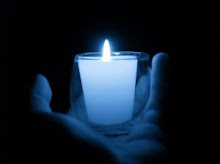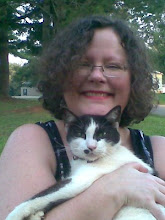The following is from a Reflection Paper due today. I thought it might be worthwhile to post it here as well. One section is abbreviated because it was drawn from a prior blog entry.
This directed independent study is intended for development of the personal self, the self as a therapist, and for professional growth. These reflection papers will be an exploration on a personal level and will contain emotional reactions to my trans issues in my personal life, in the therapy room and in my reading. This beginning reflection paper will be an especially personal reflection of what brought me to be interested in gender variance.
I have a love/hate relationship with gender variance. On the one hand, the GLBTQ community has assumed a common banner in order to give a diverse group of minority people voice. We have become united in being defined as “other”; that is, other than meeting the heterosexual norm. Politically, assuming a common umbrella has become necessary in a society that allows the majority to define the rights of the minority.
On the other hand, I took many years moving from the self defined label of “heterosexual” and I am still making terms with what someone else's choices can do to my self identity. I married four times. I had two children. While my first experience with a woman occurred when I was seventeen, and I had a two year affair with a woman when I was thirty, I just called those relationships part of my “wild” side and did not think in terms of bisexual or lesbian. Indeed, bisexuality seemed exotic or simply forbidden in a world of literal interpretation of the bible, and I had a fascination of things I thought to be naughty that my parents and my church called sinful.
It wasn’t until my late teens that I had the conscious awareness that there might be anything beyond heterosexuality. I certainly never questioned if I was gay. Driven by extreme hormones and a desperate need to escape my mother’s home, I married at eighteen. I certainly did not know any women who were lesbians, not even in high school. In my thirties, when I went to grad school and met my first openly lesbian woman. I never questioned if I was gay, even then, because I was also married but in an open relationship.
I was forty when the hormones subsided and menopause came early. I sincerely believe my ability to process without a every three week estrogen cycle changed everything. I came out as bisexual but was with a woman. It took me a long time to work through issues such as if I defined myself as gay, did it disavow my previous roles of mother and wife. Then I was with Cameron, who was extremely uncomfortable with the bisexual label, as are many people in our community. Since I am in a long term committed, monogamous relationship with a woman, I chose to identify as lesbian. I have also reached a place in my personal journey that if anything happened to my partner, I would never seek male companionship or sex again. That is not where my desire lies. Then a friend said to me that identifying as lesbian is as political as it is personal. So I explored what being lesbian means. I read blogs, books, and journals. I explored poetry and researched theory, history and fiction. I questioned, I argued, I got angry. I eventually also made peace with my label and my inner self. I tell this story to set the stage for what happened next.
I came to school at Converse to answer my calling. That first summer I took the diagnostics class and acquired a copy of the DSM-IV-TR. The afternoon it arrived, Cameron and I drove across town as I thumbed through exotic diagnoses. I was relieved not to find gay, lesbian or homosexual in those pages. But we did stumble upon transgender. Intrigued, I read the diagnostic criteria, surprised how much fits my partner. Shaken, we read it again. Eventually we took it to our therapist, who confirmed the diagnosis.
The world shifted focus. My new hard earned self definition could change, not because I did, but because the woman I loved could transition. Regardless of how I viewed myself, others would inevitably apply the label heterosexual to me again, and I didn’t want it. That was three years ago.I have subsequently learned many partners feel the same way when they find out their loved ones are transgendered.
I have found that facing our fears often makes them smaller. I reached out to an online community for the family members of those who are transgendered. I took the sex therapy class last summer and, when faced with the reality of my fears, froze. I couldn’t say anything to the transwoman. I talked to my therapist. I blogged. I met people like Alissa and Luke, who reminded me that we are all just people. Their kindness and generous spirits offered healing and reality. Then I attended a conference in January and met Alexander James Adams, and gained a great deal of peace with this issue (see previous blog).
I’m currently a therapist to a transwoman, which is the reason I choose to continue at WestGate an extra semester. He identifies as male currently. He tells me that he’ll shift is name and pronouns when he looks in the mirror “and sees her.” I already see her just beneath the skin, in mannerisms and gestures, in attitude and identification. These next four months are my final semester at Converse. I want to become the therapist that people like my client seeks. I want to continue my own personal journey as well.
Thursday, February 11, 2010
Subscribe to:
Post Comments (Atom)










Well put, both from a therapeutic and a personal viewpoint. You've come a long way and I know you are also scared. Keep in mind that it scares Cam as well. And keeping that fear bottled up... well you know better than I.
ReplyDeleteAs to the client, her seeing herself in a mirror is hard. Her feeling herself on the inside is hard not to do. It's finding that place on the spectrum where she feels comfortable. We don't all completely transition. We don't all act the same. The sooner we can loose the binary across the board the sooner the patients will get relief. They need to be treated as individuals not just a diagnosis in the DSM or rules to follow like the WPATH SoC.
*hugs* and good luck.
Alissia